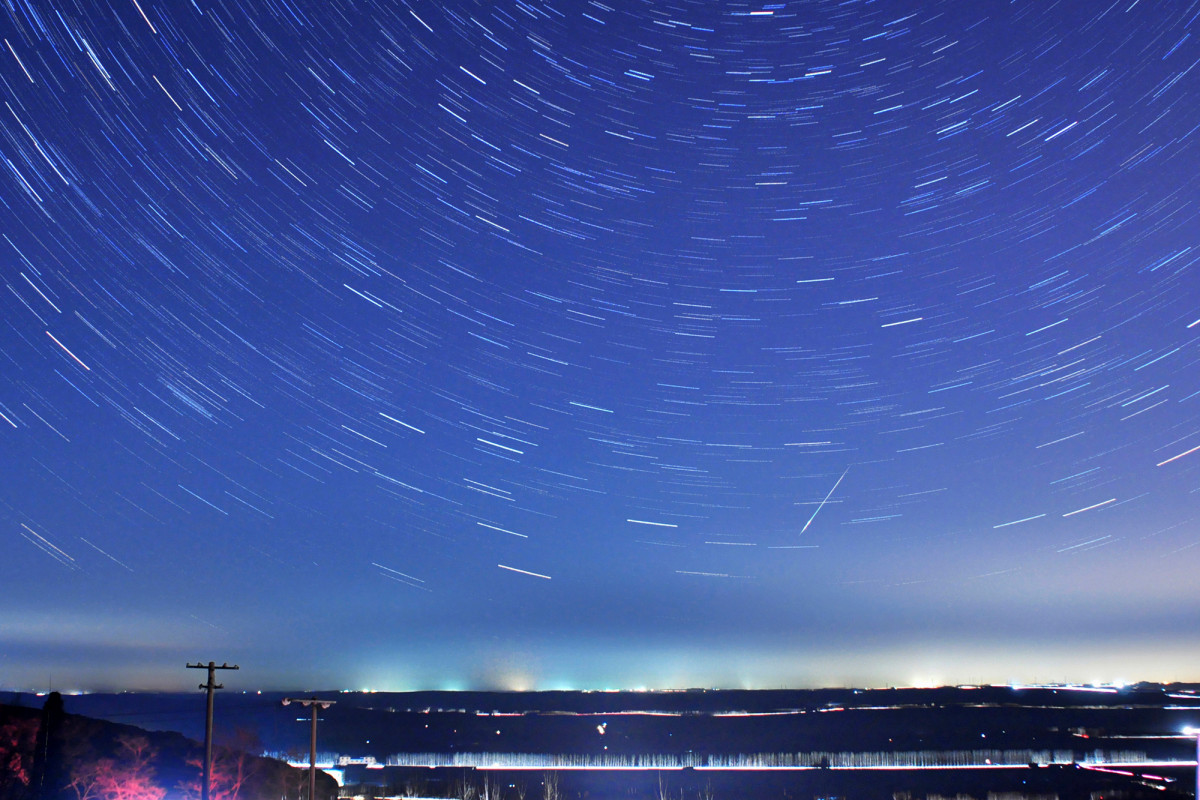Not only are the fireworks that signal the start of the new year, they are also a meteor.
This weekend, keep an eye out for the Quadrantids, which – for those who want to brave the cold and fight sleep during the late night hours – have been known to display on a fiery screen every January.
Read on to see how you can get the most out of it – and start 2021 with a blast.
What are the quadrants?
Quadrantids kicks off every new year with a stunning celestial parade. It’s one of the best annual meteor showers. According to NASA. It is famous for shooting bright fireballs. Unlike the rapid flash of a medium meteor line, these sizzling fireballs produce greater bursts of light and color that remain visible for a longer period of time.
The difference between the Quadrantids and most other meteor showers lies in the fact that the Quadrantide originates from the debris of an asteroid, which is a bare space rock. The particles burn bright as they decompose and burn in Earth’s atmosphere. Most meteor showers come from the comet’s smaller dust – which is itself a ball of ice and rock. According to Business Insider.
Every January, our planet meets the asteroid trajectory 2003 EH1 and orbits directly through its debris. As its name suggests, the asteroid was discovered in 2003, and it is about two miles in diameter. It takes about 5 and a half years to orbit the sun – a speed slower than Earth takes to do the same thing – and it could be a „dead comet“ or, according to NASA, a new „rocky comet“ object being discussed by astronomers.
What time do quarter meteor showers occur and when do they peak?
Although Quadrantids are active between December 28 and January 12, they peak in early January each year. However, unlike other meteor showers – which can peak for two days – the quadruple peak window is much narrower, at around six hours. The reason: The asteroid leaves a thin stream of debris in its wake, which the planet collides with at a perpendicular angle.
In 2021, the quadruple will peak overnight on Saturday in the pre-dawn hours of Sunday 2 January 3. When there are ideal conditions, the peak can appear between 60 to 200 meteors per hour. But there is one big caveat: the waning moon will be around 84 percent full, According to the International Meteorite Organization – this means that their light may exceed about half of meteors.
How do I view Quadrantids?
First, in early January, pack up your luggage before heading out – and take a sleeping bag, blanket, or reclining chair with you. After that, get as far away as possible from any light pollution.
You’ll want to lie flat on your back – or as close as possible – and look. It is best if your feet are facing northeast. With the moon so bright, find a place where you can push it out of your sight in an effort to reduce its brightness.
You will also need to devote a large chunk of time to watching, as your eyes will need 30 minutes to adjust to the dark.
When is the next meteor shower in 2021?
Lyrids come next in the meteor showers calendar, which will remain active between April 14th through April 30th. If the Quadrantides end up messy, waiting several months may have benefits. Lyrids are set to peak between April 21 and 22, when the weather in the Northern Hemisphere will improve and the Moon will be 68 percent full.

„Total Social Media Ninja. Introvertiert. Schöpfer. TV-Fan. Preisgekrönter Unternehmer. Web-Nerd. Zertifizierter Leser.“


